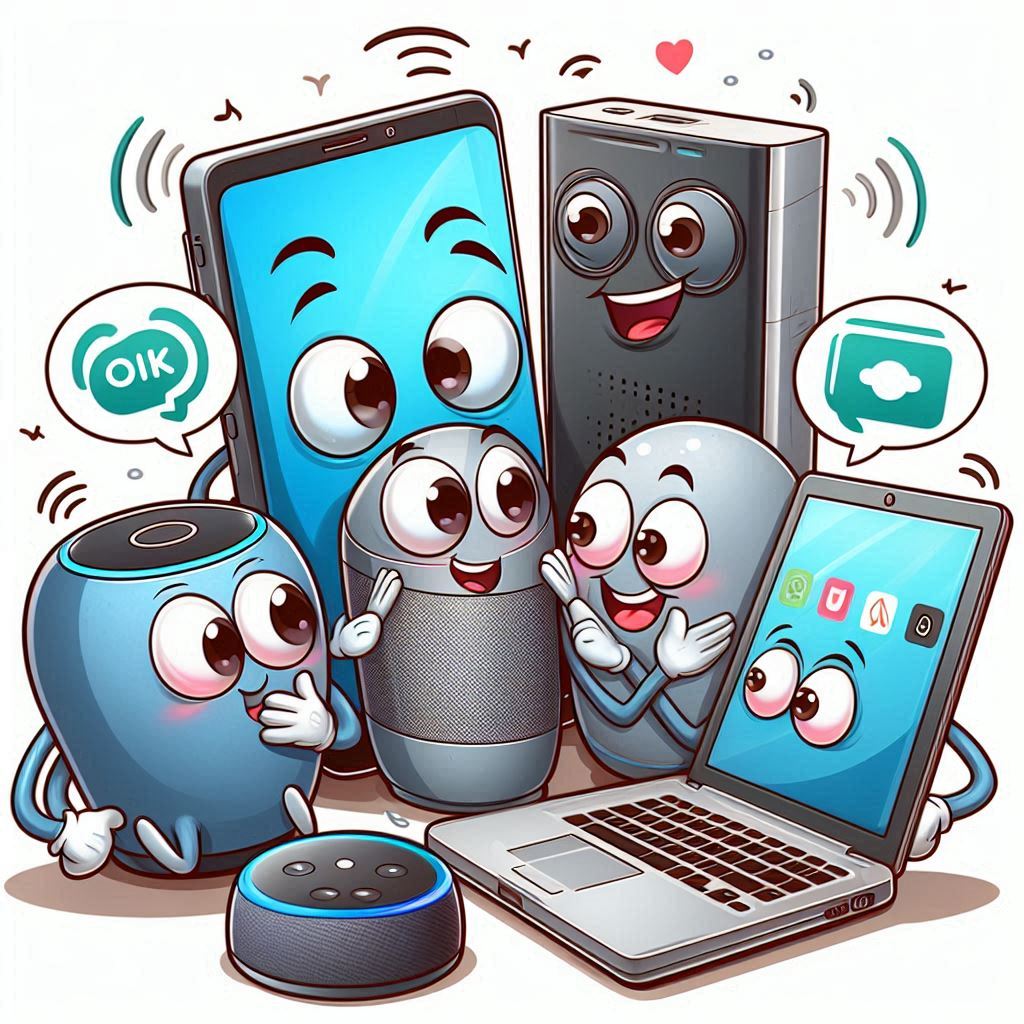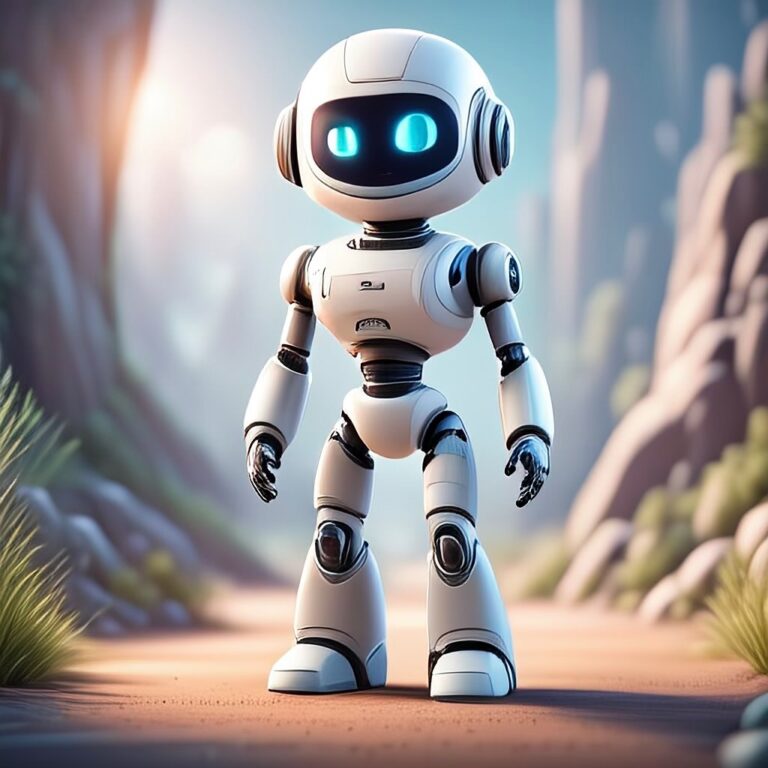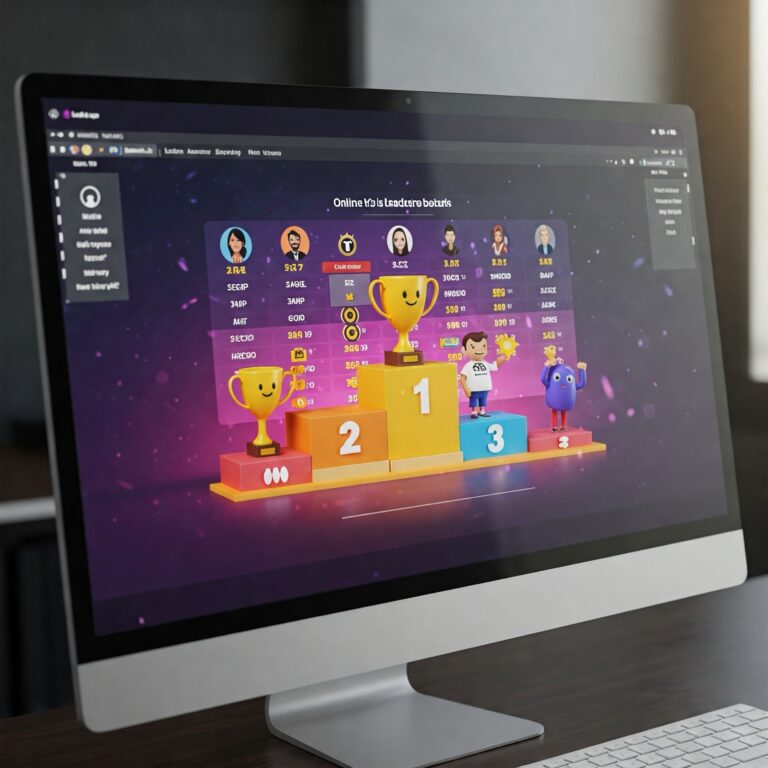Forget Robot Uprisings, Get Ready for Robot Teamwork! Demystifying Google’s Agent-to-Agent Idea (No PhD Required!)
Have you ever felt like a digital air traffic controller? You tell your calendar app to schedule a meeting, then you tell your email app to send an invite, then you tell your reminder app to nudge you beforehand, and maybe you even tell your smart light to flash when it’s time to join the call. Each gadget, each app, is like a little digital helper, an “agent” doing its specific job. But you’re the one running around, relaying messages, making sure everyone’s on the same page. Exhausting, right?
What if… what if… these digital helpers could just… talk to each other? What if your calendar agent could just tell your email agent, “Hey, Bob scheduled that meeting, send the invite,” and your email agent could reply, “Got it, invite sent! Hey, reminder agent, give Bob a nudge 10 minutes before.”
Sounds like science fiction? Well, it’s closer to reality than you might think, and it’s the core idea behind concepts like Google’s research into Agent-to-Agent (A2A) communication.
Hold On, What’s an “Agent” Anyway? Sounds a Bit James Bond.
Okay, fair point. In the world of AI and computer science, an “agent” isn’t necessarily a suave spy in a tuxedo (though that would be cool). It’s simply something that can:
- Perceive its environment (like seeing your command, reading your email, checking the time).
- Process that information (understand what you want).
- Act upon that environment to achieve a goal (schedule the appointment, send the email, turn on the light).
Think of them as specialized digital employees. You have:
- Your Digital Assistants: Google Assistant, Siri, Alexa – they listen and try to do stuff for you.
- Your Apps: Your calendar app is an agent focused on time management. Your map app is an agent focused on navigation. Your banking app is an agent managing your finances.
- Smart Home Devices: Your smart thermostat is an agent managing temperature. Your smart lock is an agent managing security.
- Behind-the-Scenes Agents: Even things like spam filters in your email or the algorithm suggesting movies on Netflix are types of agents, working away quietly.
Right now, most of these agents work in silos. They’re like employees in different departments who rarely talk to each other unless the boss (that’s you!) explicitly tells them to share information.
The Problem: Why We Need Our Digital Assistants to Gossip (Productively!)
The current situation leads to a few headaches:
- Repetitive Tasks: You tell multiple apps the same thing. “Add flight to calendar,” “Remind me to check in,” “Set alarm for flight.”
- Information Gaps: Your navigation app doesn’t automatically know about the appointment your calendar app just scheduled. Your smart home doesn’t know you’re away just because your flight tracker app says you’re airborne.
- Complexity: Managing dozens of apps and devices requires you to learn how each one works and manually coordinate them for complex tasks. Booking a holiday often involves juggling websites for flights, hotels, car rentals, checking reviews, blocking out your calendar… it’s practically a part-time job.
This isn’t how things should work. Technology is supposed to make life simpler, not turn us into glorified digital switchboard operators.
Enter the Concept: Agent-to-Agent (A2A) Communication
This is where the magic happens. Agent-to-Agent communication is the idea of creating a common language or a set of rules (a “protocol”) that allows these different AI agents, even ones made by different companies or for different purposes, to talk to each other, share information, and work together to achieve your goals.
Think of it like the United Nations, but for your apps. Instead of needing a human translator (you) for every interaction, the agents have a way to communicate directly.
- It’s NOT Skynet: Let’s get this out of the way. This isn’t about AI becoming self-aware and plotting world domination over clandestine digital coffee breaks. It’s about controlled, purposeful communication designed to execute your requests more efficiently and effectively. The agents are still following rules and working towards goals set by humans. (Probably. We hope. Let’s stick with ‘helpful’ for now!)
- It’s About Collaboration: The goal is seamless teamwork. Your request acts as the main objective, and the relevant agents collaborate behind the scenes to make it happen.
How Would This A2A Thing Actually Work? (The Simple Version)
Imagine you want to plan a weekend trip to Brighton. Instead of opening ten different apps, you might just say to your main assistant (like Google Assistant):
“Hey Google, plan a weekend trip to Brighton for me and Sarah next month, leaving Friday evening, back Sunday night. Find a nice hotel near the pier, book standard train tickets, and put it all in our shared calendar.”
Now, instead of Google Assistant just doing a web search and giving you links, an A2A system would kick into gear behind the scenes:
- Goal Understanding: The primary agent (Google Assistant) understands the overall goal: Plan a Brighton trip for two, specific dates, preferences included.
- Task Delegation: It identifies the sub-tasks needed: find travel dates, check availability, find hotels, book train, update calendar.
- Agent Recruitment: It figures out which specialized agents are needed:
- A Calendar Agent (to check your and Sarah’s availability).
- A Travel Agent (maybe specialized in trains).
- A Hotel Booking Agent.
- A Shared Calendar Agent (to add the final events).
- Information Exchange: The agents start talking:
- Assistant to Calendar Agent: “Are User and Sarah free Friday evening to Sunday night next month?”
- Calendar Agent to Assistant: “Yes, the weekend of the 15th-17th looks clear.”
- Assistant to Train Agent: “Book standard return train tickets for 2 adults, London to Brighton, leave Friday 15th evening, return Sunday 17th evening.”
- Train Agent to Assistant: “Okay, found tickets on the 18:30 train Friday, returning 19:00 Sunday. Cost is £X. Confirm?”
- Assistant to User: “Found train tickets for £X. Looks like a good hotel near the pier is the ‘Seaside View Inn’ for £Y per night. Shall I book both?”
- Confirmation & Action: You confirm. The Assistant tells the respective agents:
- Assistant to Train Agent: “Confirm booking.”
- Assistant to Hotel Agent: “Book Seaside View Inn, 2 nights from Friday 15th for 2 adults.”
- (Once confirmations received) Assistant to Shared Calendar Agent: “Add ‘Trip to Brighton’ Fri 15th 18:00 – Sun 17th 20:00. Include train details [link/ref] and hotel details [link/ref].”
- Result: You get a single confirmation: “Okay, your Brighton trip is booked! Train and hotel confirmed, and it’s all in your shared calendar.”
See the difference? You gave one complex instruction, and the agents collaborated like a well-oiled (digital) machine to handle the details. No juggling apps, no repeating information. Just… done.
Why Should You Care? The Amazing Use Cases
This isn’t just about booking holidays slightly faster. Think about the potential:
- Truly Smart Homes: “Movie Night” mode doesn’t just dim the lights you remembered to include in the scene. Your Door Lock Agent confirms the doors are locked, your Blinds Agent lowers the blinds, your TV Agent switches to the right input, your Sound System Agent sets the audio mode, and maybe your Popcorn Maker Agent (hey, we can dream!) starts pre-heating. All from one command, perfectly coordinated.
- Seamless Healthcare: Your doctor schedules a follow-up. The Clinic’s Scheduling Agent talks to your Calendar Agent to find a free slot. Once booked, it notifies the Pharmacy Agent to prepare your prescription refill and maybe even coordinates with a Transport Agent if you need a ride. Your Health Monitoring Agent (like a smartwatch) could share relevant data (with your permission!) directly with the Doctor’s Agent before the appointment.
- Efficient Work Life: “Schedule a project kick-off meeting for next week with the marketing team.” The Scheduling Agent checks everyone’s calendars via their Calendar Agents, finds a slot, books the room (talking to the Room Booking Agent), sends invites via the Email Agent, and links the relevant documents by talking to the Document Management Agent.
- Proactive Assistance: Agents could even anticipate your needs. Your Calendar Agent sees you have an early flight. It talks to your Alarm Agent to set an early alarm, checks the Traffic Agent for conditions, and maybe even tells your Smart Coffee Maker Agent to start brewing when your alarm goes off. Creepy or cool? You decide!
Okay, I’m Sold! How Do I Set Up This “Agent-to-Agent Protocol”? (The Reality Check)
Ah, here’s the slightly awkward part. You, as an end-user, don’t really “set up” the Agent-to-Agent protocol itself. It’s not like installing an app or pairing a Bluetooth device.
Think of it like the internet protocols (TCP/IP, HTTP) that make websites work. You don’t configure TCP/IP on your phone; you just use apps and browsers that are built using those protocols.
Similarly, A2A is more of a foundational concept, a set of standards and technologies that developers at companies like Google (and potentially others, if standards emerge) would use to build their AI agents and services.
So, what can you do? How will you experience this?
- It Will (Likely) Be Gradual: This isn’t a switch that gets flipped overnight. You’ll likely see AI assistants gradually become more capable of handling multi-step, multi-app tasks. Google Assistant, for example, can already perform some basic chained commands (“turn off the lights and set an alarm”). A2A research aims to make this much more powerful and flexible.
- Focus on Permissions: As agents get chattier, managing permissions will be crucial. You’ll need clear controls over which agents can talk to each other and what information they can share. Expect to see more granular permission settings in your apps and device controls in the future. “Allow Calendar Agent to share free/busy status with Scheduling Agent?” – Yes/No.
- Use Integrated Ecosystems: Initially, A2A communication might work best within a single company’s ecosystem (e.g., various Google services talking to each other). Using services that are designed to work together will likely give you the earliest taste of this seamless integration.
- Keep Your Software Updated: As these capabilities roll out, they’ll come via software updates to your operating systems, apps, and assistant platforms.
- Provide Feedback: As you notice assistants getting smarter (or failing humorously at complex tasks), providing feedback to the developers helps them refine these systems.
Essentially, the “setup” for you is simply using the next generation of AI assistants and apps that have this collaborative capability built-in. Your interaction point remains your primary assistant or the relevant app; the A2A magic happens under the hood.
The Challenges: Why Isn’t Everything Talking Already?
Building this digital utopia isn’t easy. There are hurdles:
- Standardization: For agents from different companies (Google, Apple, Amazon, your bank, the airline) to talk, they need a common language. Agreeing on standards is complex (think USB-C vs Lightning, but for AI chatter).
- Security: If agents can act on your behalf (like booking tickets), security is paramount. How do you prevent rogue agents or unauthorized access? Authentication and secure communication channels are vital.
- Privacy: How much personal information are agents sharing? Users need absolute transparency and control over data flow. Who owns the conversation data between agents?
- Complexity & Reliability: What happens if one agent in the chain fails? Does the whole task collapse? Building robust, fault-tolerant systems is tricky. How do you prevent conflicting instructions or endless loops of agents arguing? (Okay, maybe not arguing, but error states).
- Discovery: How does your primary agent even know which other agents exist and what they can do? There needs to be a sort of “agent directory” or discovery mechanism.
Google and other researchers are actively working on these challenges. It’s a long road, but the potential payoff – technology that truly works together for you – is huge.
The Future is Collaborative (Hopefully Not Colluding!)
The idea of Agent-to-Agent communication represents a major shift from isolated apps to interconnected, collaborative digital ecosystems. It promises a future where interacting with technology is less about juggling different tools and more about simply stating your goal and letting your team of digital agents figure out the ‘how’.
It could free up significant time and mental energy currently spent on digital admin, allowing us to focus on more important (or just more fun) things. Imagine the complexity it could strip away from managing finances, health, travel, work, and home life.
So, next time you find yourself telling three different apps the same piece of information, remember the A2A concept. It’s not here in full force yet, but the groundwork is being laid for a future where your digital assistants are less like isolated workers and more like a highly efficient, collaborative team, all working behind the scenes to make your life just a little bit easier.
And hopefully, they won’t start demanding collective bargaining rights. But that’s a worry for another day!






